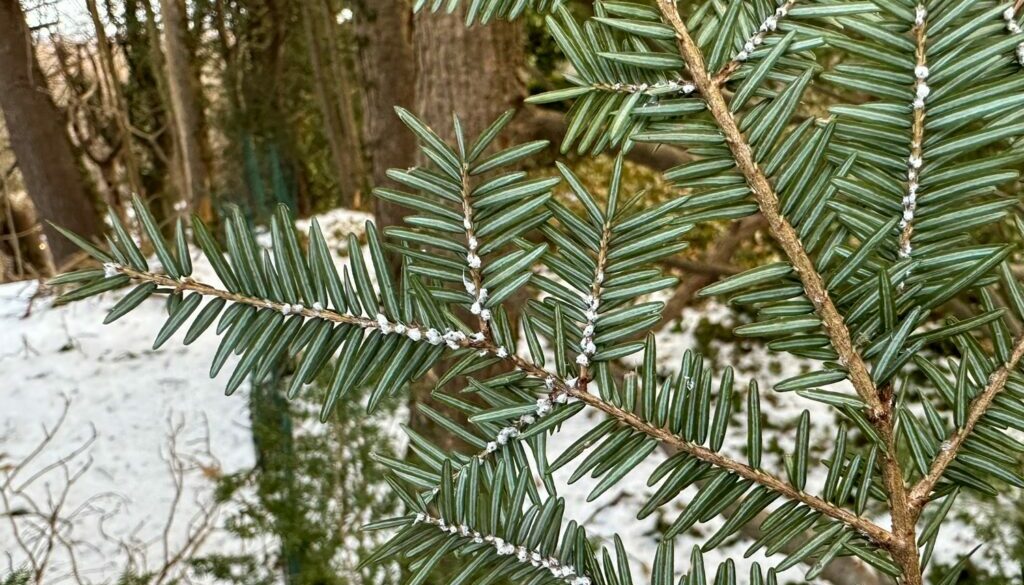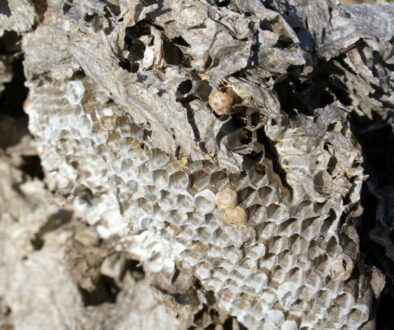Scouting for the Hemlock Woolly Adelgid in Rochester
There are a number of invasive insects that environmentalists are tracking, but this year there’s some extra attention on the Hemlock Woolly Adelgid (HWA). This invasive insect feeds on the sap of eastern hemlock trees and its well past becoming a nuisance. It spreads at such high rates that it currently is on track to decimate New York’s hemlock population. This time of year is a critical point in the insect’s gestation, so we went to see if we could locate any infestations in Rochester.
Unfortunately, it didn’t take long at all.
We found egg sacks within just minutes of stepping into Washington Grove near Cobbs Hill Reservoir!
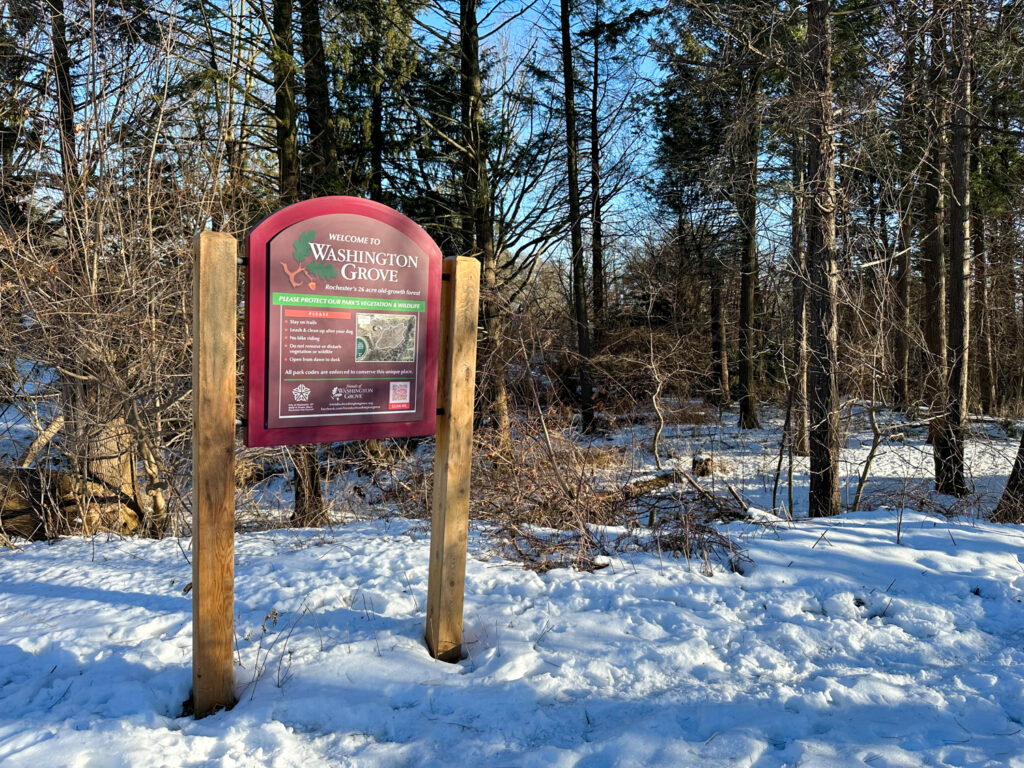
Why Hemlocks Are Important
To truly understand the potential devastation the Hemlock Woolly Adelgid might cause, it’s important to understand why eastern hemlocks are so critical.
Eastern hemlock trees are what’s known as a foundation species. A foundation species is a local species that is plentiful, but most importantly it controls the ecology immediately surrounding it. In the case of the hemlock, one way they are critical is how their root systems help stabilize cliffs in our gorges. You’ll see examples of this throughout Watkins Glen State Park and Taughannock Falls State Park. If those hemlocks at the edge die, their root systems no longer provide the structural integrity for the soil. That could ultimately mean crumbling gorge walls.

Hemlocks also provide an ample tree canopy. That shade assists with controlling the temperature in those forests allowing other plants and forest life to thrive. As the third most common tree in New York State, the eastern hemlock’s absence would devastate much of our natural landscape. The tree is so prolific here that if the hemlock was suddenly erased overnight, you wouldn’t even recognize most of the scenes you’re familiar with in the Finger Lakes.
If you’re thinking that just replanting more hemlocks would solve the problem, there’s trouble with that solution. Eastern hemlocks are also known as a climax species, which means they are an indicator of a mature ecosystem. It can take hundreds of years for them to reach a state of maturity.
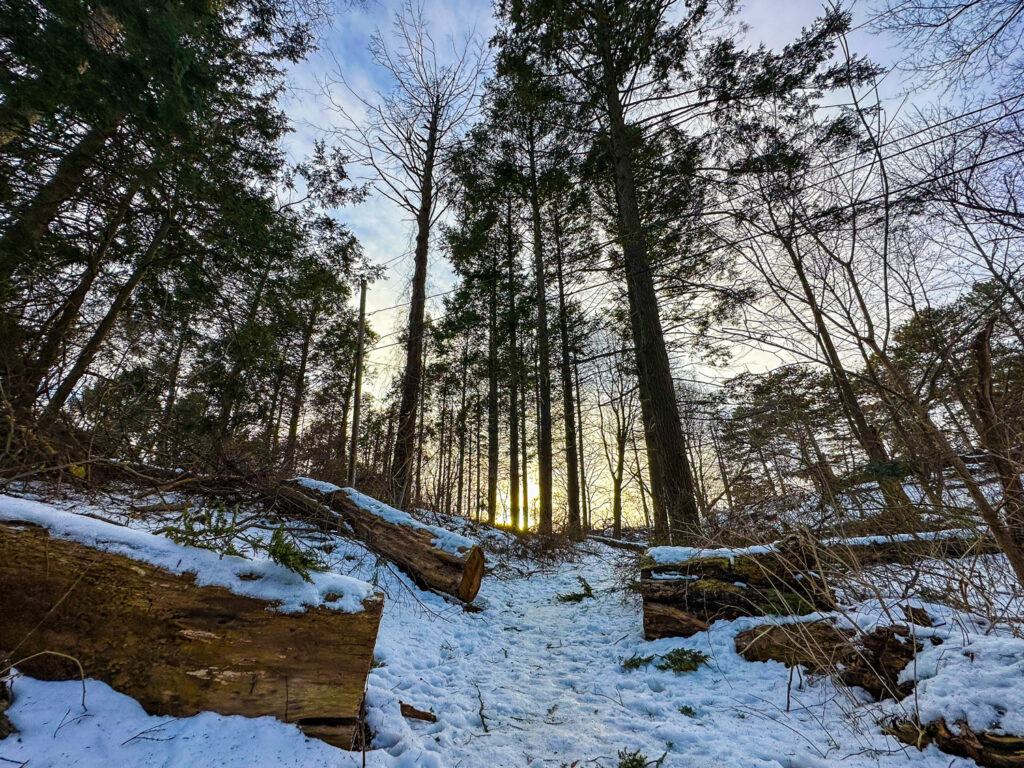
How the Hemlock Woolly Adelgid Causes Destruction
The Hemlock Woolly Adelgid first made its way to North America in the early 1950’s by way of Japan. The first place it was spotted was in Virginia and in the 70 years since it has spread to nearly half the country. Back in Asia the adelgid has natural predators that help keep the balance. Here in the United States though, there is nothing to stop the bug, so reproduction continues unchecked.
The adult HWA is super tiny. In fact, it’s about .8 millimeters wide. (For reference, the width of a human hair is about .12 millimeters.) Imagine walking through the woods and trying to spot a hair laying on a branch in a tree! Needless to say, spotting an adult is nearly impossible with the naked eye.
As an adult, the HWA is asexual so it can reproduce without the assistance of a mate. That of course means one single insect can reproduce once it has settled on a hemlock. The newly hatched adults can reproduce themselves, and then those can reproduce and so on. Within a short time you have millions of adelgids on each tree.
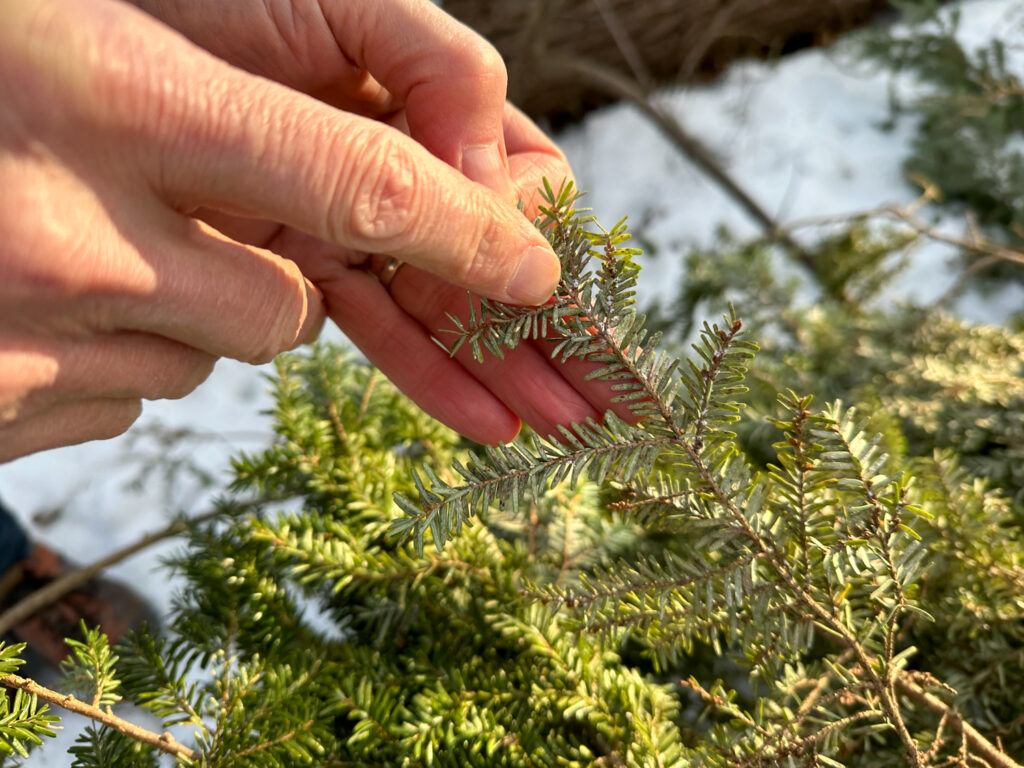
What’s super interesting about the destruction process is that the adelgid technically isn’t causing the damage. The adelgid feeds on the sap of the twig and when the hemlock recognizes it has a parasite feeding away, it automatically stops sending sap to that twig. Without sap to feed on, the adelgid moves to the next twig, which the hemlock shuts down. Then the adelgid moves to the twig and that gets shut down and the cycle continues.
Eventually, the adelgid keeps moving and the hemlock keeps shutting down until the tree has essentially killed itself.
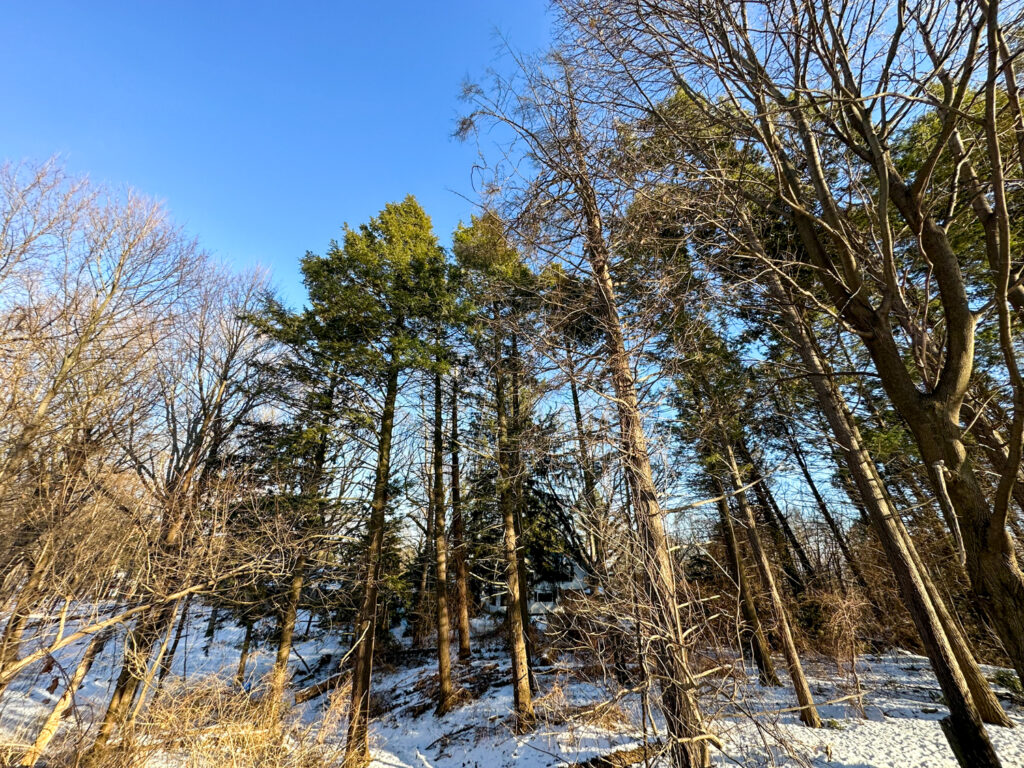
How To Spot An Adelgid Infestation
Typically the way an infestation is discovered is once that adult has laid eggs. The eggs are laid on the underside of the hemlock twig and encased in a protective white, cottony woven sack. While these are also really small, once a twig has been selected as a breeding ground, there are likely many egg collections making it easy to recognize.
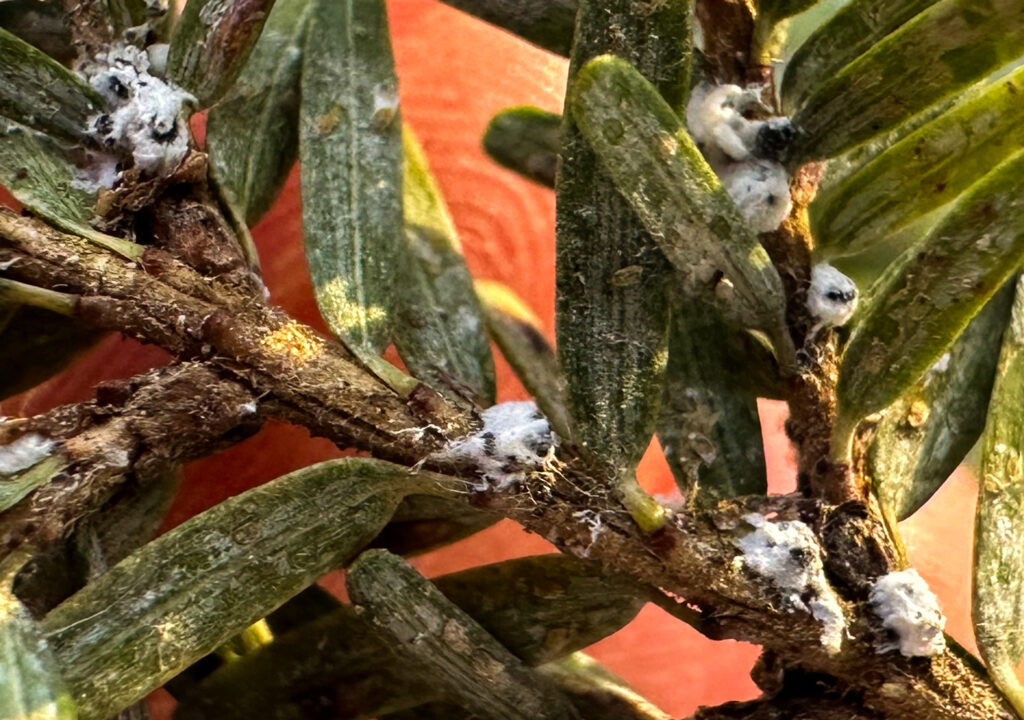
Some key points to spotting an egg collection are:
- They will only be on an eastern hemlock in our area. They do seek other hemlock species, but in New York the eastern hemlock is the primary host.
- They’ll only be on the underside of the twig.
- Just because you don’t see any eggs on a twig, doesn’t mean they’re not on the tree. Adults can be transported from tree to tree by wind, so it’s possible that it’s begun to lay eggs out of your reach up toward the canopy.
- You might also be able to spot an infestation by how healthy the tree is looking. It looks like a 100 foot hemlock has a lot of missing needles and bare twigs around its trunk, it’s possible that tree has the adelgid.

Washington Grove
Michael and I went for a walk through Washington Grove by Cobbs Hill Park because we knew there was a collection of hemlocks in the grove. Unfortunately, it didn’t take long at all to find a collection of eggs. A recent storm had taken down a large trunk bringing with it a bunch of twigs which had a lot of eggs attached. They didn’t look super healthy, but we’re thinking that’s because the tree had likely fallen a few weeks ago.
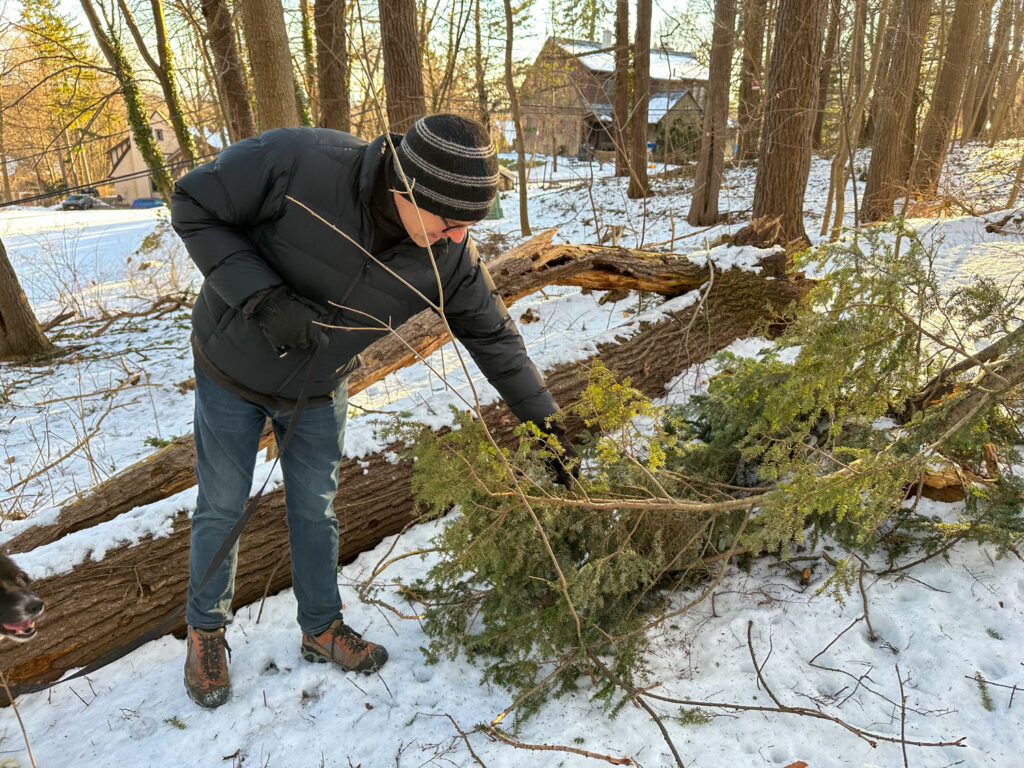
A few branches laying around that had fallen from high up in the canopy also had eggs attached.
Further along the trail a collection of hemlocks on an adjoining private property with branches that leaned into the park had a large collection intact. The tree still looked pretty healthy so it’s likely that the infestation was somewhat recent.
The hemlock population in Washington Grove is already starting to suffer from the impact.
So, Now What?
Here’s the worst part of the Hemlock Woolly Adelgid story: There’s not too much that can be done.
Yet.
Researchers are studying two different predators that feed on the insect in their native habitat. Some of these insects are being released to treat infestations that threaten serious erosion, but only on a small scale. The research moves slowly because they need to make sure that those new predators don’t create bigger problems. Scaling up production of these insects is also challenging.
There are some pesticides that can be applied by a certified pesticide applicator who is familiar with treating trees. There are topical sprays, and some methods that include tapping the tree and injecting the systemic pesticide into the trunk. This method helps the trees distribute the pesticide throughout its system so when the sap carrying the chemical reaches the bug, it effectively kills the insect. The problem with this method is that it’s expensive, especially for large properties. Depending on the systemic insecticide that is used, it needs to be applied each year or every 4-5 years.
If you have hemlocks on your property and you’re wondering if you have the Hemlock Woolly Adelgid (HWA), we’d be happy to come out and take a look (from the ground). We do provide Scouting for invasive species as a service. Or, you can send us pictures through Messenger on our Facebook page and our Instagram and we could take a look that way. If you find HWA on your property or in a park, you can report it using iMapInvasives. It isn’t the easiest app to use but it can help New York State monitor these insects and plants, and prioritize research and treatment.

